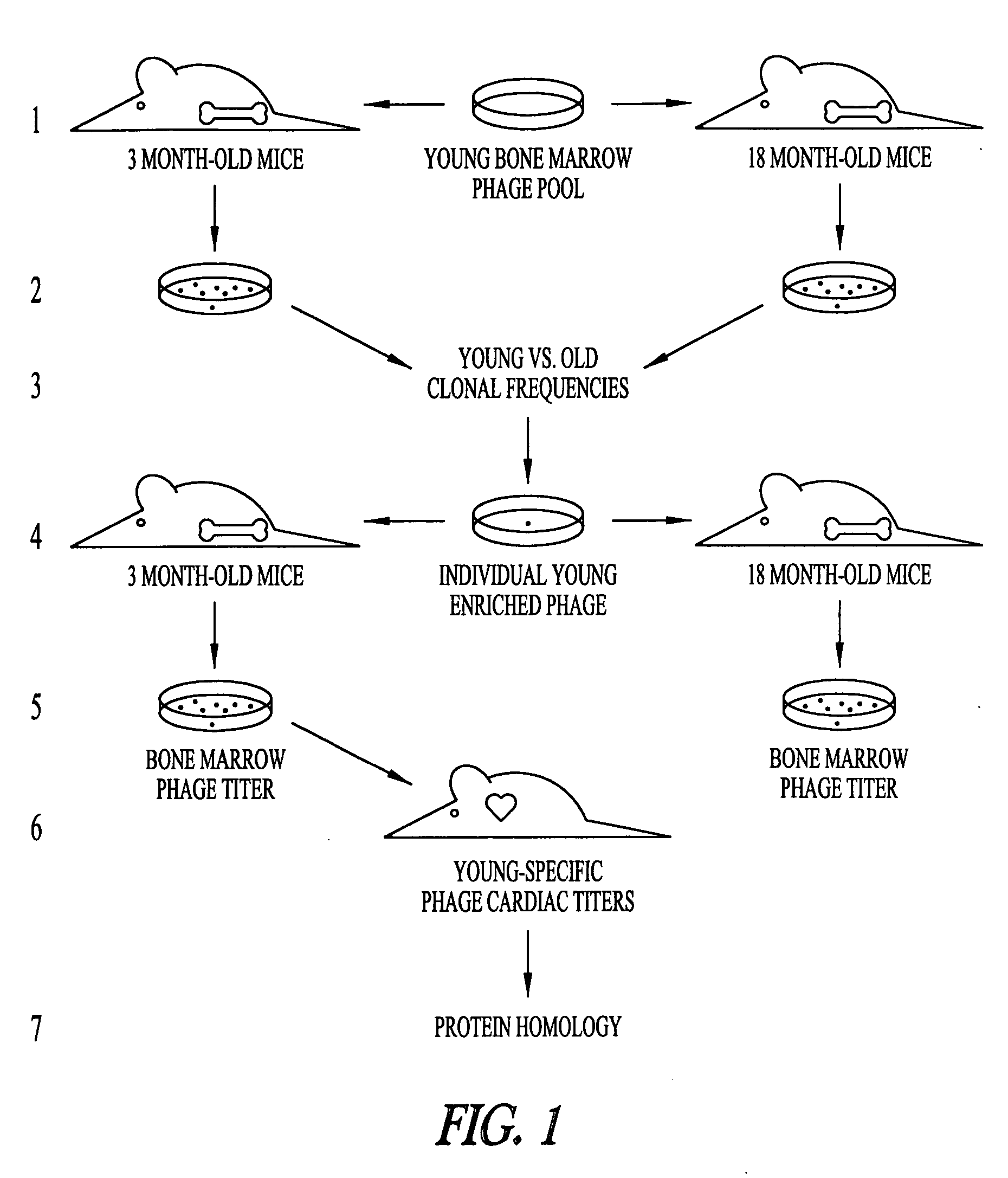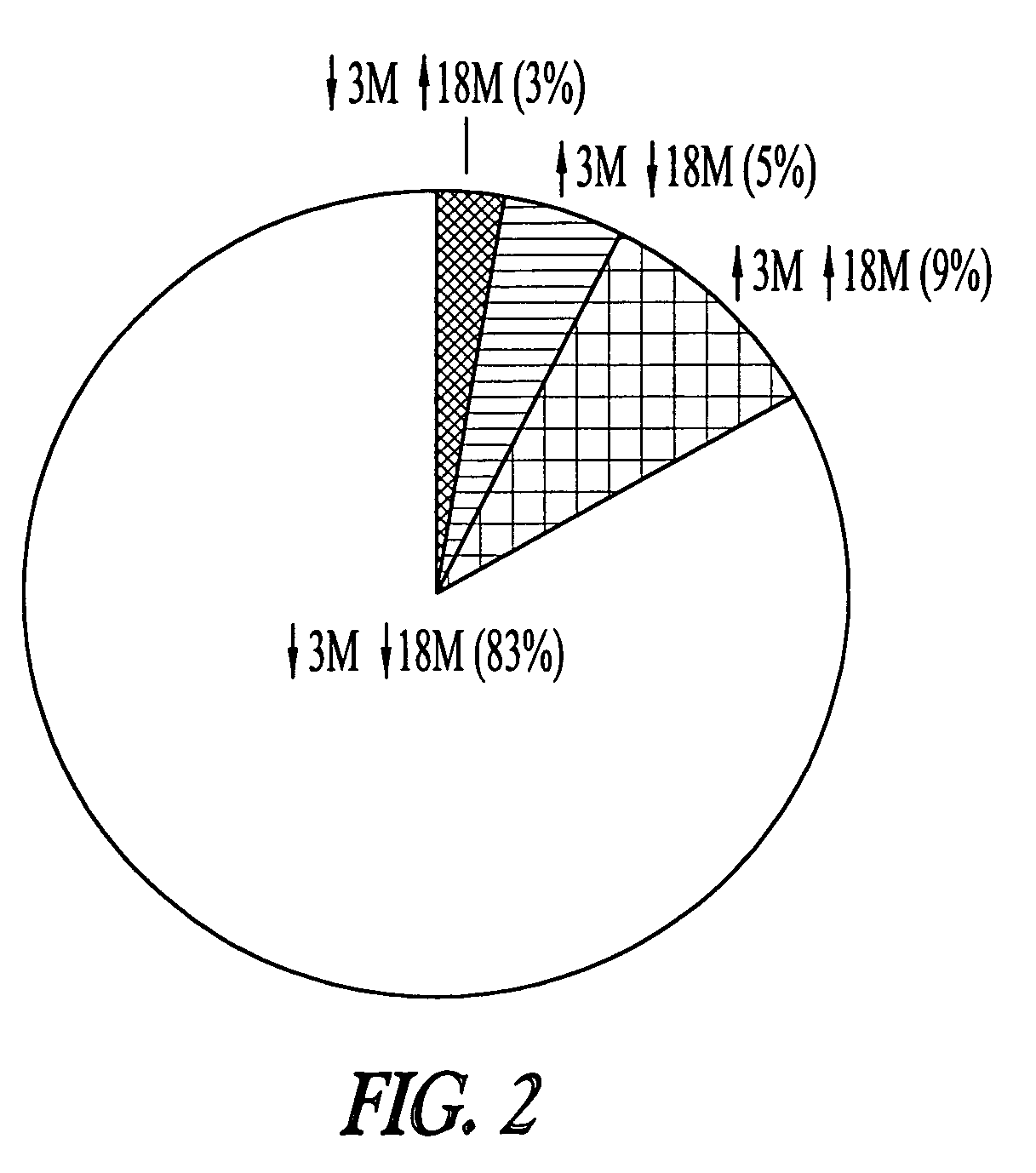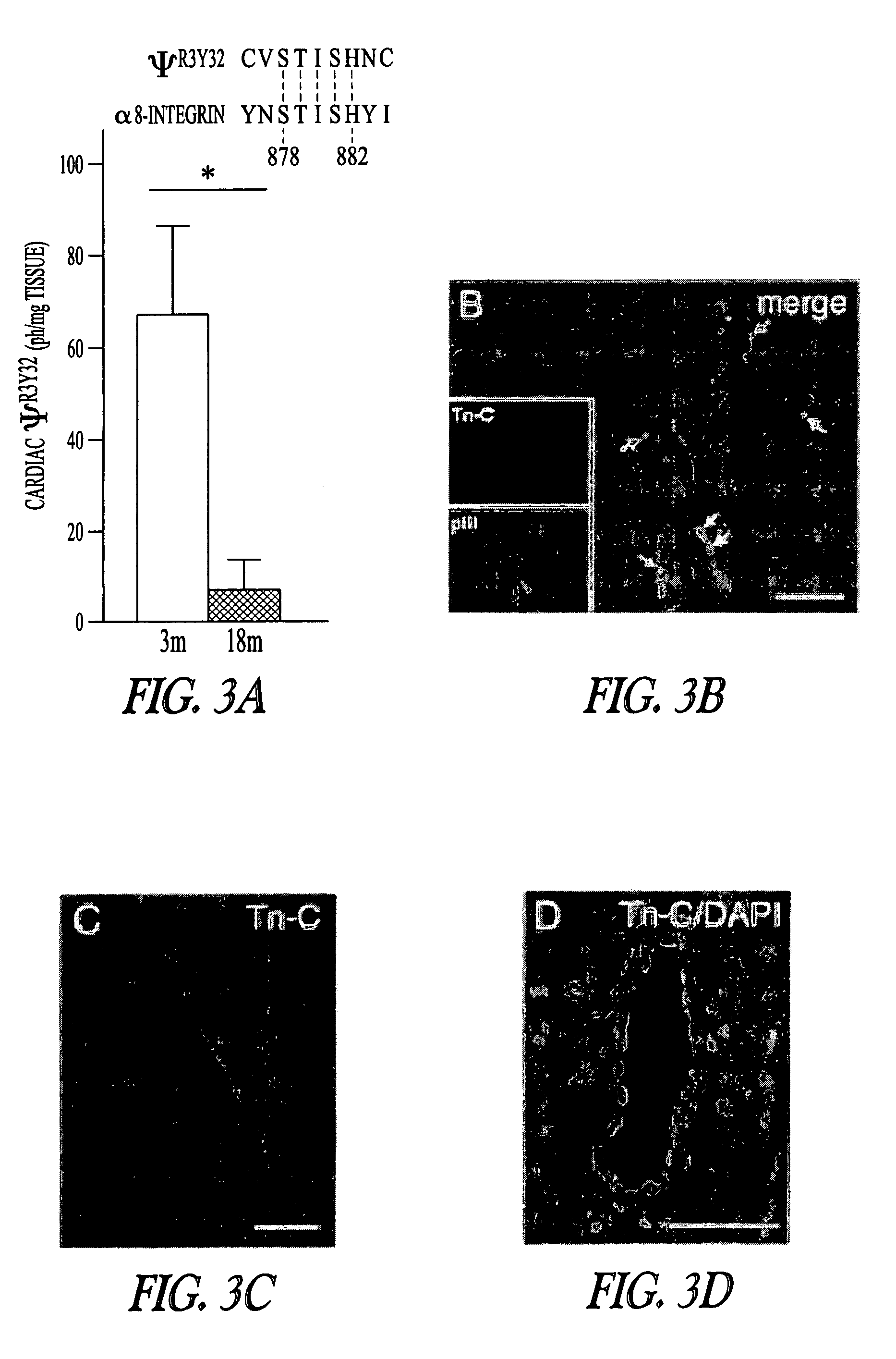Restoring vascular function
a vascular function and functional technology, applied in the field of tenascinc, can solve the problems of coronary heart disease medical costs estimated at $95 billion dollars a year, and achieve the effects of promoting cell migration, and reducing the risk of cardiovascular diseas
- Summary
- Abstract
- Description
- Claims
- Application Information
AI Technical Summary
Benefits of technology
Problems solved by technology
Method used
Image
Examples
example
Peptides that Bind Bone Marrow and Heart Microvascular Tissues
[0177] According to the invention, alterations in specific molecular epitopes of the aging bone marrow cells underlie the senescent impairment in the derivation of cardioprotective EPCs. In order to test this hypothesis, a functional genomic / proteomic approach was initiated. In particular, in vivo phage cyclic peptide libraries were used to identify age-associated changes in bone marrow receptors and adhesion molecules that contribute to the impairment in senescent cardiac vascular function. This approach is outlined in FIG. 1.
Materials and Methods
Animals
[0178] Three-month-old and 18-month-old C57B1 / 6 mice and 4-month-old F344 rats were employed using procedures that complied with the Institutional Animal Care and Use Committee of Weill Medical College of Cornell University.
In Vivo Phage Biopanning
[0179] To identify young-specific bone marrow-homing phage, a phage library encoding a cyclically constrained seven am...
PUM
| Property | Measurement | Unit |
|---|---|---|
| Therapeutic | aaaaa | aaaaa |
| Affinity | aaaaa | aaaaa |
| Biodegradability | aaaaa | aaaaa |
Abstract
Description
Claims
Application Information
 Login to View More
Login to View More - R&D
- Intellectual Property
- Life Sciences
- Materials
- Tech Scout
- Unparalleled Data Quality
- Higher Quality Content
- 60% Fewer Hallucinations
Browse by: Latest US Patents, China's latest patents, Technical Efficacy Thesaurus, Application Domain, Technology Topic, Popular Technical Reports.
© 2025 PatSnap. All rights reserved.Legal|Privacy policy|Modern Slavery Act Transparency Statement|Sitemap|About US| Contact US: help@patsnap.com



